Brand Identity Services
“If you are not a brand then you are a commodity and can only compare on price”
Philip Kotler. Brand identity should be crafted to support the Marketing Strategy. It is important because it helps differentiate the brand, enhances recognition and recall, builds trust and credibility, creates emotional connections, ensures consistency, and supports brand extension and expansion. It plays a crucial role in shaping customer perceptions, driving customer loyalty, and ultimately contributing to the success and growth of a business.
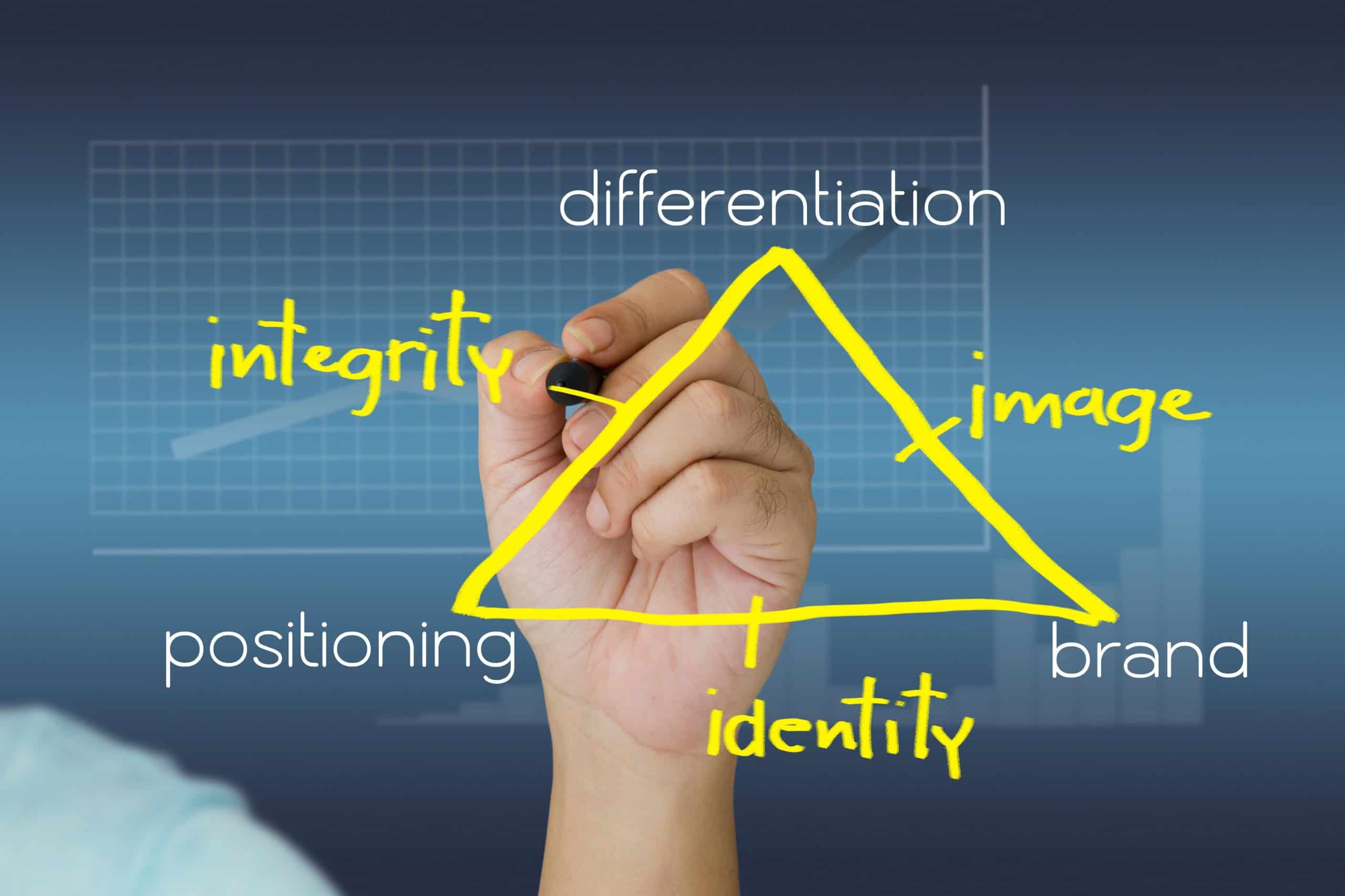
- 1. What is Brand Identity?
- 2. Is Brand Identity related to the Marketing Strategy?
- 3. Is Brand Identity important for business-to-business brands?
- 4. What are the key elements of a Brand's Identity?
- 5. What are the key elements of Brand Essence?
- 6. What are the key elements of a Brand Profile?
- 7. What are the key elements of a Brand Architecture?
- 8. How can Duffy Agency help with my organization’s Brand Identity?
What is Brand Identity?
1. Brand Basics
Brand Identity, in simple terms, refers to the way an organization wants the world to perceive and recognize its brand. It encompasses the intentional elements and characteristics that the organization develops to shape how it presents itself to the market and differentiates itself from its competitors.
Think of Brand Identity as a brand’s “personality” or “character.” Just as individuals have their own distinct traits, appearance, and way of communicating, likewise, a brand has its own identity that sets it apart from others.
Brands communicate their identity in many different ways, such as:
- How the brand appears with its name, logo, colors, typography, and images
- The types of products the brand represents and the value they deliver
- The subject matter and tone used in promotional copy
- How the brand behaves with its values, beliefs, and policies
- How the brand treats its customers
- How the products are priced and distributed
- Environmental and employment policies
- The causes the brand supports or takes exception to
- Sound effects or songs associated with the brand
- Even odors, as demonstrated by the mall-based bakery chain Cinnabon attract buyers viscerally by venting the exhaust fumes from their baking ovens into the air around their stores
Together these cues form the basis for opinions about the brand. By carefully crafting and consistently applying the right cues, a brand can craft a strong and recognizable identity that resonates with its target audience. A well-defined Brand Identity helps customers understand what the brand represents, builds trust, and fosters a connection between the brand and its customers.
2. The important difference between Brand Identity and Brand Image
It’s important to make the distinction between “Brand Identity” and “Brand Image” right from the start. This is more than a matter of semantics, it’s a matter of perspective. As discussed above, Brand Identity refers to the way an organization wants the world to perceive and recognize its brand. To help shape that perception, the organization carefully crafts the various elements of the Brand Identity to help communicate its desired identity to the public. In this sense, the Brand Identity is a goal or statement of a desired outcome: It is how the organization wants its brand to be perceived and nothing more.
Brand Image, on the other hand, refers to how the target audience actually perceives the brand based on the cues the organization provides. Brand Image is the result of the brand’s identity being transmitted, received, interpreted, and formed by customers and stakeholders. These cues are filtered through their knowledge of the brand, their previous experiences and interactions with the people employed by the brand, as well as their preexisting beliefs and biases toward the category and competitors. How closely your Brand Image resembles your Brand Identity depends on how effectively your organization can manage these variables.
3. Ultimately, buyers – not the brand owners – define the Brand Image.
The organization has considerable power to shape its Brand Identity and create the desired image. However, it’s worth remembering that the ultimate arbiter of your Brand Image is the target audience. They base their decision on the cues provided by the organization at every touchpoint. This is much more than slogans and advertising claims. It includes everything from the pricing strategy and packaging to customer service and product development — even employment practices and community relations. In addition to what the brand says in its ads, all of these things shape how the brand is perceived. Therefore, managing and aligning Brand Identity with the intended Brand Image is crucial for a successful brand and is the essence of Brand Management. To learn more, be sure to check out our Brand Management page.
4. The brand as a fictional character
Developing a Brand Identity can be a daunting and mysterious process to someone who has never done it before. To fiction writers, however, it is not mysterious because it is what they do with each new novel: create characters that are not real but for whom people care deeply. Experience writing fiction may remove the mystery but the task is no less daunting because every writer knows how difficult it is to create a character that readers truly engage with and care about.
5. The challenge that every business faces
Brand Image is a main driver of purchasing decisions for both B-to-B and B-to-C brands. At the end of the day, what influences our opinion of brands is pretty similar to how we form opinions of people. It is not how they describe themselves on a profile page. It is through the patterns of behavior they display in their day-to-day interactions with the world. The difference is that the behavior of an individual is dictated by that individual, whereas the behavior of a brand is dictated by the many individuals in the organization who make decisions on behalf of the brand every day. And each of those individuals has their own personality, values, and beliefs. So how do we get all these different people to make decisions in the same manner that buyers will see as consistent and “on-brand”?
It may seem silly to define things like personality, values, and motivation for an inanimate object like a brand. But from the buyer’s perspective, the brand is very much animated. It is brought to life by the daily activity of every member of your organization. We help define the brand’s identity to help people in the organization make decisions in a consistent manner that reflects the brand and its values. The objective is to help all employees to look at problems through the lens of the Brand Identity and basically ask themselves, “what would the brand character do in this situation?”
6. “We don’t need no stinkin’ Brand Identity!”
Why invest time and money in crafting a professional Brand Identity? First of all, codifying your identity allows you to teach your staff how to “live the brand.” It also provides the structure required to monitor and manage your reputation in the market. But most importantly, your brand will have an identity, whether you decide to define it or not. The real question is simply a matter of control. If you don’t define what your brand is all about, your competitors will do it for you, and it won’t be flattering. If you have a brand, it will have an image; it’s just a matter of who controls it. Make sure it’s you.
Is Brand Identity related to the Marketing Strategy?
Integration with Marketing Strategy is essential
Brand Identity is often developed in a bubble by a graphic design firm. This is a mistake. Isolating the Brand Identity development from the Marketing Strategy work weakens both. Ideally, the Brand Identity should be developed after the Marketing Strategy is settled. That way, the Brand Identity can be designed to support the Marketing Strategy while serving several other key functions for business success, such as:
- Differentiation: In a crowded and competitive marketplace, Brand Identity helps businesses stand out and differentiate themselves from competitors. It gives unique and recognizable characteristics to the brand, enabling customers to distinguish it from others offering similar products or services. A strong Brand Identity helps create a lasting impression and builds customer loyalty.
- Recognition and Recall: A well-defined Brand Identity, including consistent visual elements like logo, colors, typography, and brand voice, makes the brand easily recognizable and memorable. This facilitates customer recall when they encounter the brand in various marketing channels, leading to increased awareness and consideration.
- Trust and Credibility: A consistent and well-crafted Brand Identity signals professionalism, reliability, and quality. When customers recognize and resonate with a brand’s identity, they are more likely to trust the brand and feel confident in their purchase decisions.
- Emotional Connection: Through a cohesive Brand Identity, businesses can communicate their values, personality, and story, allowing customers to connect with the brand on an emotional level. This emotional connection fosters brand loyalty, advocacy, and long-term customer relationships.
- Brand Consistency: Brand Identity provides a framework for maintaining consistency across various marketing touchpoints. Consistency in brand elements, messaging, and customer experiences helps reinforce the brand’s identity and builds trust over time. A consistent Brand Identity across different platforms and channels ensures a cohesive and unified brand presence.
- Brand Extension and Expansion: A strong Brand Identity allows businesses to extend their offerings or expand into new markets more easily. When a brand has a well-established identity and loyal customer base, customers are more likely to embrace new products or services under the same brand umbrella. A strong Brand Identity can also support successful brand extensions and new market entries.
- Increased Equity: For business owners and investors, a well-crafted Brand Identity allows businesses to treat their brand as an asset and build bankable equity in it. Among successful brands, it is commonplace for the brand’s name, on its own, to be worth more than all other assets in the company combined. This can dramatically increase the value of the company.
- Risk Reduction: The best indicator of future sales prospects is Brand Equity among consumers. That is, the degree to which a specific target group has brand awareness, understanding, interest, trust, trial, belief, affinity, loyalty, and advocacy. All of these factors can be managed and measured. Most successful brands do this because high Brand Equity among buyers correlates with the probability of future sales and the ability to charge a premium thus increasing margins.
Is Brand Identity important for business-to-business brands?
Yes. Believe it or not, research has shown that Brand Image plays a more important role in Business-to-Business (B-to-B) purchase decisions than it does in Business-to-Consumer (B-to-C) purchase decisions. This may seem counterintuitive since the common perception is that B-to-C purchases tend to be more emotionally driven and B-to-B purchases are more rational decisions. However, the stakes are typically much higher in a B-to-B purchase and B-to-B brands tend to be less familiar to people. All this means greater risk for the B-to-B buyer. This makes trust-related elements, such as credibility, likability, and believability, even more important for B-to-B purchases. Put another way, if you buy the wrong tube of toothpaste for your kids and they don’t like it, you can just replace it, but if you buy 500 of the wrong gyroscopes for your satellites and they malfunction in space, you have a much bigger problem on your hands. Since most B-to-B brands do not invest in their Brand Identity, this creates a significant opportunity for those who do.
What are the key elements of a Brand’s Identity?
When most people hear about Brand Identity, they immediately think about visual aspects like logos, colors, and fonts. But that’s only part of the picture. We make a distinction among three aspects of the Brand Identity:
- Brand Profile: Refers specifically to the name and visual elements of the brand, including the logo, typography, color palette, imagery, and overall design aesthetic. It encompasses the visual representation of the brand and is primarily focused on the brand’s visual communication.
- Brand Essence: Encompasses the intangible and emotional aspects of the brand, including its values, purpose, personality, and overall identity. It represents the core essence and unique attributes that define the brand’s character and differentiate it from competitors.
- Brand Architecture: The strategic structure and organization of a Brand Portfolio, determining how individual brands and sub-brands relate to each other from the target’s perspective. This also involves developing guiding principles and rules that govern the naming process for brands and products, and ensuring consistency, clarity, and alignment with the brand strategy. When developing Brand Architecture and Naming Conventions, we refer to this work as BANC.
By using the terms “Brand Profile” and “Brand Essence,” we can differentiate between the visual aspects and the broader, more encompassing elements of the Brand Identity.
What are the key elements of Brand Essence?
We said one way to look at Brand Identity is as a brand’s “personality” or “character.” That’s why we use many of the same conventions used to describe a personality or character in our codification of a Brand Identity. These include:
Backstory
This is what you find in the “About” section of a website.
- Backstory of Organization: Typically a concise but inspired tale of the founder’s vision and the obstacles that were overcome to get to where the organization is today.
- Place of Origin: Used properly, where the brand is from can serve as a short-hand way to convey certain brand values associated with that place. It can also be a liability that would need to be addressed.
- Biographies of Key Players in the Organization: It is important to include short bios with highlights that reinforce the brand values and inspire confidence.
Purpose
For a corporate brand, this will include the vision, mission, and goals of the organization. Product brands typically do not have visions and missions of their own. They inherit and contribute to the vision and mission of their parent company. But they can have their own goals and objectives.
-
-
- Vision: The picture of the type of world the organization is trying to create
- Mission: The primary activity the organization pushes in order to make its vision a reality
- Goals: The ambitions that brand leadership has for the organization or product
- Objectives: The concrete milestones that the brand has established for itself
-
Personality
We define the personality of others by observing patterns of behavior, expression, and thought. Buyers assess brands in the same manner.
-
-
- Tone: The manner in which we communicate. Not what we say so much as how we say it.
- Topics: Conversely, this is what we say, not so much how we say it. They are the topics on which we choose to focus because they are important to us.
- Style: While Brand Tone refers to the personality and emotional expression in brand communication, Brand Style refers to the visual elements and design aesthetics that represent the brand.
-
Narrative
A successful Brand Narrative encompasses several key elements that work together to create a compelling and memorable story that the brand tells with its content or at speaking events. Brand Narrative defines the overarching viewpoint or perspective that we bring to our category and/or position that (a) we will be known for, (b) will differentiate us, and (c) will resonate with our target (even if it alienates others). If you market internationally, this should work globally.
-
-
- Motivation: Drives the emotional connection and authenticity. The underlying emotions, intentions, values, or objectives that compel the brand to focus this particular narrative.
- Point of View: Differentiate the brand. The brand’s unique take on the industry, its challenges, and opportunities that shape the narrative.
- Support points: Provide the evidence, data, or insights that substantiate and validate the Brand Narrative and point of view.
-
Behavior
This is most noticeably seen in company culture and the causes the organization supports. It is the result of clarity around what the brand stands for and how that is applied to day-to-day decision-making. In particular, the brand values define the sandbox you can work in when pursuing the vision and mission. Values define the borders within which the company operates and employees consider every decision.
-
- Values: The guiding principles that define what the brand stands for and believes in.
- Traits: Distinctive characteristics, habits, or qualities that the brand embodies and influence how the brand presents itself to and interacts with the world.
- Causes: Help demonstrate our values through alignment with others who embody our beliefs and allow us to support them in a tangible manner.
What are the key elements of a Brand Profile?
This refers to how the brand is represented with its name and visual appearance. The idea is to be consistent so we can build recognition over time. We do that by defining the following elements of the brand’s profile:
Name
Developing a brand name for a product that will be sold internationally requires a different process than naming a brand for domestic use only. Duffy Agency’s process includes developing a naming brief based on the Marketing Strategy, generating names, global cultural checks, and assessment, as well as global domain name and web asset acquisition.
Logo
The logo is the visual symbol or mark that represents the brand. It serves as a visual identifier and can be a combination of text and/or graphic elements.
Typography
This refers to the fonts, typefaces, and typography styles used consistently across brand materials. Typography helps convey the brand’s personality, tone, and visual hierarchy.
Color Palette
The color palette consists of the specific colors used consistently in brand materials. It includes primary and secondary colors that represent the brand and evoke specific emotions or associations.
Imagery and Photography Style
The selection and style of imagery and photography play a role in brand visual identity. This includes the choice of visuals such as illustrations, photographs, or graphics, as well as the specific style, filters, or treatments applied to them.
Graphic Elements
Brand visual identity may incorporate unique graphic elements or patterns that enhance the brand’s visual appeal and recognition. These can include shapes, icons, textures, or patterns that are consistently used in brand materials.
Layout and Composition
The way visual elements are arranged and structured in brand materials contributes to the overall visual identity. This includes the design principles, grid systems, and layout Guidelines that create a cohesive and balanced aesthetic.
Brand Guidelines
Brand Guidelines document the usage and application of the visual identity elements. They provide instructions on how to use the logo, typography, colors, imagery, and other visual elements consistently across different media and platforms.
These elements work together to create the public face of the brand, establishing a consistent and recognizable identity that aligns with the brand’s values, personality, and target audience.
What are the key elements of a Brand Architecture?
A strong Brand Architecture facilitates growth making it faster and easier to expand, contract, or otherwise adapt the product offer to new markets or conditions with minimal disruption to the organization or buyers. Brand Architecture defines hierarchy and the relationship among brands that the organization owns, including corporate brands, product brands, and sub-brands. The goal is to create an architecture that makes it easy for the target to understand what the company does and to quickly find what they are looking for. To that end, we also include naming conventions in our Brand Architecture work. This ensures that the products are named and arranged in a way that makes sense to buyers. The steps below are required to create or revise an organization’s Brand Architecture.
Please note that we often do this work in combination with Marketing Strategy and/or Brand Identity. In those cases, the steps below indicated with an asterisk, would have already been covered by that work:
Assessment of Current Brand Portfolio
Evaluate the existing Brand Portfolio and Naming Conventions, including all brands, sub-brands, and product lines. Understand the relationships, overlaps, and inconsistencies within the portfolio.
Business Objectives*
Clarify the company’s business objectives, growth strategies, target markets, and competitive landscape. Determine the desired positioning and differentiation for each brand.
Market Research*
Gather insights through market research, including customer surveys, competitor analysis, and industry trends. Understand customer preferences, perceptions, and expectations.
Brand Hierarchy
Based on the research and business objectives, determine the ideal brand hierarchy. Decide on the relationships between the corporate brand, main brands, sub-brands, and product lines. Typically this involves choosing between some iteration of a branded house versus a house of brands and customizing it to the organization’s specific situation.
Brand Roles
Assign specific roles to each brand in the portfolio such as flagship brand, umbrella brand, endorsed brand, or standalone brand. Define how each brand contributes to the overall Brand Architecture.
Criteria for New Brand Development
Brands, names, and labels are all used as signposts to guide buyers to the right products. But brands must be supported with investment, identity, and promotion to establish them in the consumer’s mind. We define the criteria under which the organization will create a new brand as opposed to just a name or label. We then provide clear Guidelines for naming new brands or sub-brands within the defined architecture.
Naming Conventions
In addition to brands, companies typically have a number of product names and labels. These, too, need to be organized and aligned in a way that causes the least friction for buyers, especially where there are a large number of SKUs. Creating clear Guidelines for naming conventions ensures consistency, clarity, and alignment with the brand strategy. It also makes it a lot easier and faster to adapt your product range when needed.
Guidelines
Codify the Brand Architecture and naming conventions in a BANC Guidelines document. Establishing the architecture is only half the battle. Adherence to the architecture will be tested constantly with noncompliant initiatives, requests for exceptions, merger and acquisition activity, etc. Over time these events can rapidly degrade the architecture to the point where it is no longer functioning as intended. The BANC document spell out the architecture and specific policies and Guidelines on how to work within it. They are meant to anticipate brand-related events and provide a coherent plan of action for when they occur (e.g., contingencies for line editions, mergers and acquisitions, modifying offers for different markets or targets, etc.) In this sense, the BANC Guidelines should be relatively future-proof and not require modification with each new development of the business.
Implementation Plan
This usually involves training key stakeholders on how the Guidelines apply to their position and communicating the rationale behind the changes to ensure understanding and buy-in.
Governance
Establish brand governance and Guidelines to ensure consistent implementation of the Brand Architecture across all channels and touchpoints. This includes specifying monitoring routines and specific governance roles to people in the organization and policies on how changes are made or disputes are resolved. The architecture will require regular review and enforced adherence to maintaining a cohesive brand presence.
Guideline Updates
Continuously monitor the performance of, and feedback on, the Brand Architecture; refine and adapt as needed based on market dynamics, business objectives, and customer feedback. The BANC Guidelines are developed to be future-proof so they should not require continual modification. If they are modified often to suit each new occasion, then they are not really serving as Guidelines. Having said that, there could be occasions where the organization faces a situation that was not anticipated in the BANC Guidelines and would require modification.
Developing a coherent Brand Architecture creates a path for growth. By following this process, businesses can develop a well-defined Brand Architecture that aligns with their business objectives, resonates with customers, and creates clarity and consistency within their Brand Portfolio. If, as a result of this process, brands need to be created and launched or retired, then Duffy Agency can also help with those projects.
How can Duffy Agency help with my organization’s Brand Identity?
Duffy Agency can provide all elements of the Brand Identity described above, including Brand Profile, Essence, and architecture.
There are three ways we can help. We can also combine these approaches for different aspects of the project.
1. Turnkey
We can develop all aspects of the Brand Identity for your organization ourselves, including Brand Profile, essence, and architecture. This is often the best option for small to mid-sized companies that may not have a dedicated Strategic Marketing team.
2. Cooperative
We can develop all aspects of the Brand Identity for your organization ourselves, including Brand Profile, essence, and architecture. This is often the best option for small to mid-sized companies that may not have a dedicated Strategic Marketing team.
3. Instructional
We can train people in your organization to develop the Brand Identity themselves, including Brand Profile, Essence, and architecture. This is often the best option for companies that have a functioning marketing department but are trying to introduce more uniform marketing best practices into the organization.
Get in touch if it sounds like you could use our help with your Brand Identity.
Contact us
Contact us to discuss which approach may work best for your organization.
This form collects your details so that we can provide you with further information in answering any questions you may have submitted. Check out our privacy policy for the full story on how we protect and manage your submitted data.

What our clients say
Trusted by the World’s Best Companies
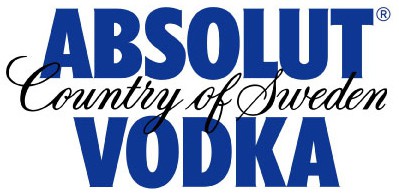
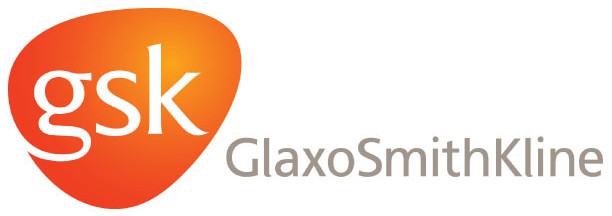




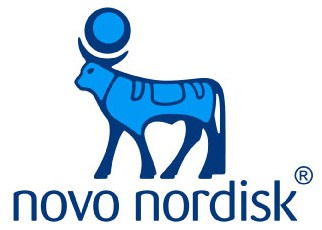





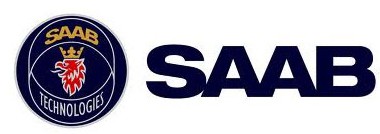
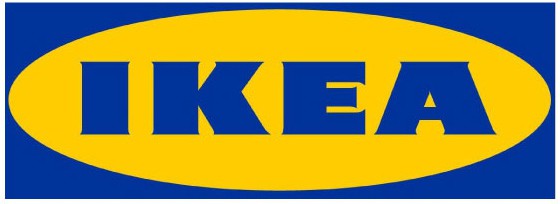










Contact us
Duffy Agency maintains a meeting space in Malmö, Sweden and Boston, MA, USA, but as of June 2023, we have converted to a 100% remote work model.
Duffy Agency USA
Mailing Address:5 Hutchings Dr Suite 100
Box 398 Hollis, NH 03049 USA
 +1 (617) 800-9887
[email protected]
+1 (617) 800-9887
[email protected]
Duffy Agency Europe
Mailing Address:Davidshallsgatan 27B
SE-21145 Malmö, Sweden
 +46 (40) 123-451
[email protected]
+46 (40) 123-451
[email protected]









